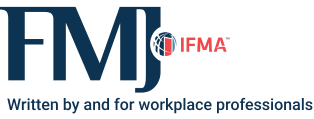Storm Proofers
Frontline defense for flood-prone infrastructure

Flooding affects more people globally than any other environmental disaster. A 2021 study published in the Nature Journal claims that the percentage of the global population at risk from flooding has risen by almost a quarter since the year 2000 and millions more will face increased flooding by 2030. Although almost US$651 billion in flood damages occurred globally from 2000 to 2019, only 13 percent of disaster funds are allocated to preparedness, mitigation and adaptation.
While severe flooding can endanger life, even moderate levels of flooding can lead to extensive damage and disruption of infrastructure operations, including high-value data centers, healthcare, power generation stations and other important building occupancies. Based on updated, world-wide flood maps, many areas not previously categorized as being at risk now fall within flood-prone zones.
Many of these buildings, sites and occupancies are situated on older sites and within older buildings with little resistance to rising water tables, flash floods and rising sea levels. These occupancies and users are at risk of repetitive flood, water damage and loss of use, which have economic and health-related consequences. Water source contamination and uninhibited ingress are significant problems, resulting in damage or loss to structural systems, building enclosures and interior contents. Water can enter below-grade areas, compromising electrical and mechanical infrastructure. Existing stormwater systems also risk being overwhelmed by anticipated increased storm intensities as climate change accelerates. To successfully address future flooding events, building owners need to be prepared by developing flood mitigation plans and weather-proofing practices.
Addressing potential hazards at existing and new facilities is generally not as easy as building a levee around the perimeter of the property. Oftentimes, a hybrid solution is most effective. Hybrid solutions can incorporate a variety of systems, including physical barriers, flood gates, deployable flood walls, backflow devices, storage tanks and ejector pumps, upgraded storm water systems, structural improvements and building enclosure waterproofing systems.
Control of water sources
The source of water varies depending on the site/building location. In coastal areas, sea level rise may be of primary concern. At in-land areas, flooding of streams and rivers are the primary water sources. Coupled with climate change, high-intensity storms, and fluctuating water tables, these water sources must be effectively controlled.
As part of improving flood resistance, facility managers must examine planning for and reacting to flood warnings. Each facility/site and its infrastructure system(s) requires an emergency response plan that includes a process for monitoring flood warnings and a deployment plan. A capital plan of mitigation measures should be developed for long-term improvements.
Mitigation measures may utilize hard and/or soft solutions. Hard solutions include sea walls, dikes, floodwalls, levees, drainage swales, graded slopes, and structural waterproofing. Physical barriers, such as flood shields, are used to protect individual openings. Soft solutions can include dune creation and beach replenishment, but these measures are subject to deterioration.
Adapting to water sources, while maintaining and improving infrastructure via capital projects, may include storm drain improvements, sewer infrastructure improvements, raising streets, addition of pumps, sustainable green roofing to slow stormwater runoff, and raising equipment above flood levels.
A more direct option is to retreat to areas above the floodplain. If this is feasible, relocating sensitive equipment and power sources to higher elevations on the same or different sites is optimal. Programs to deter development in vulnerable areas and reward development in higher elevations, updated zoning restrictions and better planning for coastal and flood-prone sites may also assist in reducing risk.
There are different methods available to decrease the detrimental effects of flooding when it does happen. Wet floodproofing uses flood-damage-resistant materials and construction techniques to minimize flood damage to areas below the flood level of a structure. Dry floodproofing (or waterproofing) is a combination of measures that results in the building structure and its supporting utilities being watertight and substantially impermeable to floodwater penetration.
Design considerations
The most common causes of waterproofing failures in below-grade structures include reliance on a single barrier, complex foundation geometries, and the misunderstanding of moisture intrusion sources. It is important to remove any occurrence of a repetitive problem detail, curb the use of untested and unproven materials, improve contractor/designer coordination and monitor workmanship while the system is installed. Structural settlement, existing soil types and proposed backfill types interacting with the waterproofing system must be reviewed. It is important to determine water/soil quality be-cause various contaminants within the soil or water can deteriorate certain membranes or render them ineffective.
Hydrostatic pressure & structural capacity & augmentation
When considering the type and placement of waterproofing on or in your structure, the depth and pressure exerted on it must be defined. This hydrostatic pressure exerts a lateral force on foundation walls, and buoyant forces on slabs. Where structural support systems experience hydrostatic conditions, structural analysis and engineering for augmentation may be required. Each project must be evaluated on a case-by-case basis.
Quality control & testing
There are several important quality control measures used during the waterproofing process. Quality control testing may include adhesion tests, electronic field vector mapping (EFVM) and flood testing. Coordination with other trades, installation methods and limitations, construction sequence, and inspection and observation of the installed system(s), are crucial. Construction sequence often dictates the way in which details are installed and, as such, coordination is required to define proper installation. Required inspections are most effective when initiated early to establish a standard of work. Frequent and thorough inspection to review unique conditions, clarify detailing, and to correct any concerns to maintain warranty coverage is encouraged.
Summary
As the saying goes, “an ounce of prevention is worth a pound of cure,” and this stands true with flood mitigation for protecting buildings, sites, and infrastructure from the effects of uncontrolled flooding. It is generally more effective to take preventative actions now to minimize impacts rather than after a flood has started or has occurred. Implementing a systematic plan now will prepare us for future.
Waterproofing TypesPositive-side waterproofing is installed on the exterior side of a structure. This method is often the least problematic and most successful method because it creates a continuous exterior barrier against water infiltration. Disadvantages of positive-side waterproofing include leaks due to faulty installation, failed material or building movement. Repairs need to be made via costly excavation or post-applied negative-side waterproofing techniques. Blind-side waterproofing is a type of positive-side waterproofing installed prior to concrete placement. It is often used on projects where property line encroachment or other space limitations prohibit the ability to access the positive side of the foundation once constructed. Negative-side waterproofing is generally applied to existing building interiors when exterior access is unfeasible. Negative-side waterproofing is often used in new construction at recessed elevator or other pits where waterproofing is not provided on the positive side. Negative-side waterproofing is generally used for problem-solving rather than problem prevention. This type of waterproofing is a preferred choice when positive side waterproofing techniques are not feasible. Fluid-applied positive side systems can either be hot- or cold-applied rubberized asphalts, urethanes, polymethylmethacrylates, polyurea and other emulsions. They can be poured and squeegeed, mopped in place or spray applied. They adhere to substrates to prevent lateral migration of water between the membrane and substrate. A downside to fluid-applied systems is that they are susceptible to pin holing, due to vapor drive from moisture in the substrate during application. A benefit of fluid-applied waterproofing is that it conforms to irregular substrate conditions and requires less pre-detailing than sheet mem-brane systems. Sheet waterproofing membrane systems include thermoplastic, modified bitumen, rubberized asphalts and high-density polyethylene (HDPE). They are typically adhered to substrates to prevent lateral migration of water between the membrane and substrate. One downside to sheet membrane systems is that they are particularly susceptible to wrinkles, fish mouths and blisters during installation. For blind-side applications, the protection of transitions must be coordinated with the adjacent construction and installation of positive-side membrane system(s). Hydro-active (bentonite/polymer) waterproofing membranes “self-seal” when the material reacts with water and swells under confinement. When utilized in blind-side under-slab applications, the use of mud slabs is common since they provide a consistent substrate for membrane installation and subsequent concrete reinforcing cages. Construction sequence and protection are critical for these materials since premature exposure to moisture can result in unconfined swelling and displacement of the hydroactive materials. |


mentoring and expertise in technical design resources, building code and construction activities. He develops and establishes operating procedures, design standards and quality management practices. Additionally, he is responsible senior project and client management, technical peer reviews, engineering and general consulting.
References
Read more on Risk Management , Real Estate and Operations & Maintenance or related topics Facility Resilience and Emergency preparedness, response and recovery
Explore All FMJ Topics









